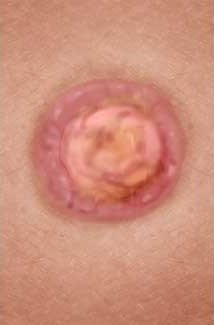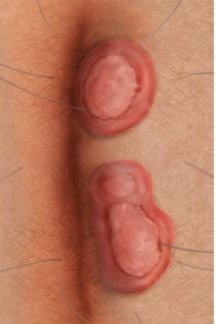The symptoms of syphilis

If syphilis causes noticeable symptoms, some typically occur on the skin and mucous membranes – only in the genital area or mouth at first, and then on the whole body. Fever and other symptoms can also develop. The symptoms come in waves. But many people have no symptoms at all.
Syphilis is a sexually transmitted infection (STI) caused by bacteria. Over time, the bacteria can spread from the genital area or the mouth to the whole body. The symptoms change accordingly over the course of the disease. Then there are phases with symptoms and phases with no symptoms.
A lot of people have no symptoms at all and never notice that they have syphilis. They only find out if they get tested as a precaution – or when complications develop in the late stage of the disease.


